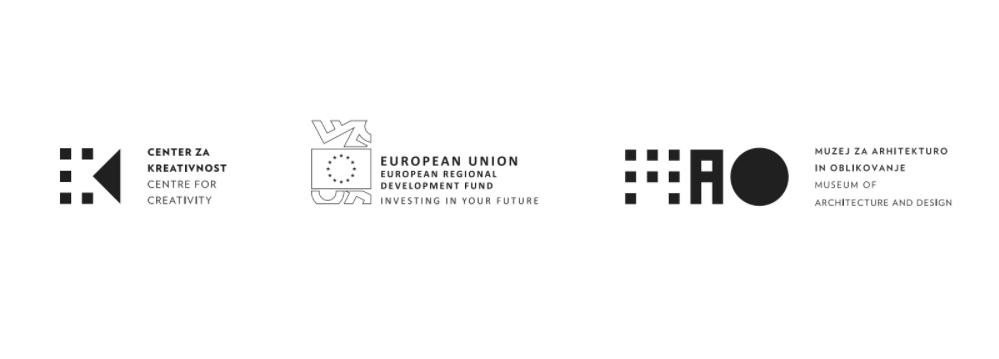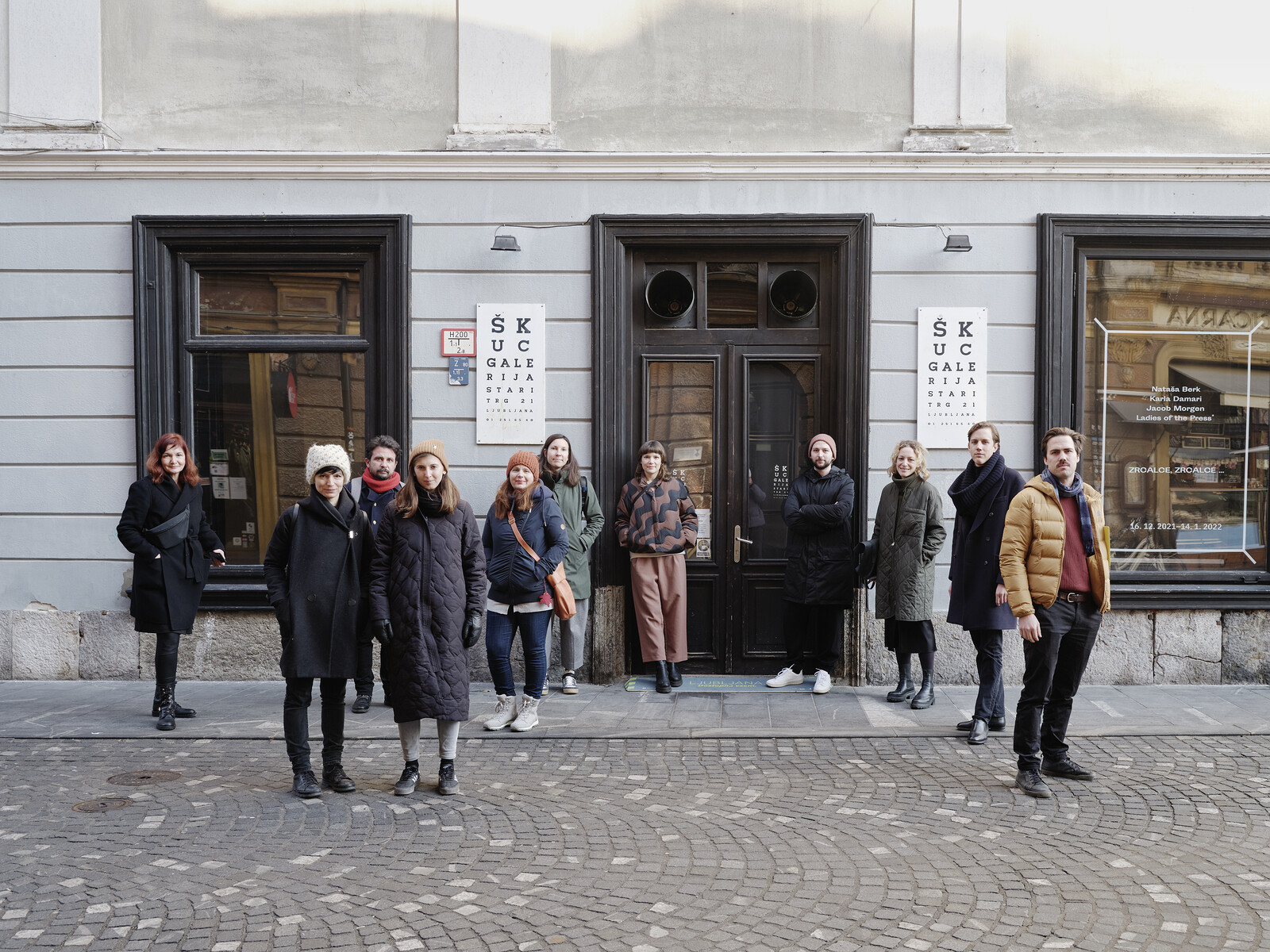February 24–March 31, 2022
The exhibition produced by Centre for Creativity and Škuc Gallery presents the following architectural studios: a2o2 arhitekti, Arhitekti Počivašek Petranovič, Elementarna, Emil Jurcan, Mertelj Vrabič arhitekti, Pazi!park, Prostorož, svet vmes, Some Place Studio, Vidic Grohar arhitekti.
Exhibition curators: Mika Cimolini and Matevž Čelik
The exhibition New Praxis, New Tools aims to shed light on the way contemporary “Slovenian” architectural practices operate. It is a coproduction of the Centre for Creativity and Škuc Gallery, where it will be on show between February 24 and March 31. Under the auspices of the Museum of Architecture and Design’s interdisciplinary platform Centre for Creativity, Mika Cimolini and Matevž Čelik put a spotlight on the work process of selected architectural organisations, in particular their work philosophy and projects. The selected studios showcase the diversity in approaches to architectural design and reveal a novel understanding of architectural practices and processes.
The exhibition will be accompanied by an eponymous catalogue featuring texts by Radim Louda, French architect and professor at the Versailles school of architecture; Luka Skansi, architectural historian and associate professor at Politecnico di Milano; Tia Čiček, art historian and curator at Škuc Gallery; Maja Vardjan, architect and architecture curator at MAO; Matevž Čelik, architectural writer and critic, MAO director Bogo Zupančič, and the catalogue’s editor Mika Cimolini, architect and CzK programme manager.
The project was inspired by three conversations between participating architects and the curators, Matevž Čelik and Mika Cimolini, in which they discussed which organisational, design and other innovations they integrate in their work, thereby changing the way we understand architectural practice today.
Neither national nor representative, the curators’ selection was entirely subjective and focused on the diversity of approaches to tackling the relevant topics in architectural design. The presented architectural practices were established 10–15 years ago, when the global financial crisis was rearing its ugly head and the pressure of the climate crisis was becoming increasingly heavy, but at the same time myriad opportunities were opening up for global networking and awareness raising of our shared responsibility for the survival of our planet. The crisis has definitely accelerated the shifts also in the way we think about the mission of architecture, how it relates to society, to ecology, and to the way practice and work is organized. Today, architects are seen as mediators between users and space, custodians of heritage, spatial activists who solve complex organizational, spatial, housing, environmental, and community problems. The selected practices can be roughly divided into three sections that frame different approaches and work methods.
The first presents Prostorož association, svet vmes studio, and Pazi!park association, all of them actively engaged in participatory architectural practices. This involves user participation and in turn awareness-raising. ProstoRož is active in the field of urban planning and activation of public space, svet vmes explores the architecture of in-between spaces in educational buildings, and the fluid collective of Pazi!park focuses primarily on landscape architecture and open space design.
The second section presents heterogeneous practices that evade a single definition: the internationally active Some Place Studio currently based in Berlin, Emil Jurcan, until recently a member of the Pula-based Praksa Cooperative, and studio a2o2 arhitekti from Ljubljana. Their goal is social and material sustainability, and they see architecture as a product of participation between architects, clients, and contractors who collaborate on an equal footing. They extend their activism to developing new collaboration or communication tools, striving to work for communities and common/community spaces.
The third section features studios that run more traditional practices than their counterparts in the exhibition—at least at first sight: Arhitekti Počivašek Petranovič, Mertelj Vrabič Arhitekti, Vidic Grohar Arhitekti, and Elementarna. They look for architectural solutions in the tangled web of site conditions and client requirements, and their principal tools are architectural competitions. They understand spatial planning as a mix of complex relationships that need resolving, and find solutions in a conceptual approach to space, irrespective of scale.
Accompanying programme
March 10, 6pm: guided tour of the exhibition with participating architectural studios
March 24, 6pm: guided tour of the exhibition with curator Mika Cimolini
“Architects and architectural bureaus who are embarking on their creative journeys and business careers are faced with complex new challenges. They meet online, on different platforms, workshops, and similar to share their experiences and insights on the mission of architecture, its interaction with ecology and society, and the way architectural practice should be organized. (…) I wish these new keepers of order in the universe much success on their creative journey!” —foreword to the catalogue by Bogo Zupančič, Director of MAO
Contact
Centre for Creativity, Museum of Architecture and Design (MAO)
Rusjanov trg 7, 1000 Ljubljana
T +386 (0)41 381 858 / media [at] czk.si








